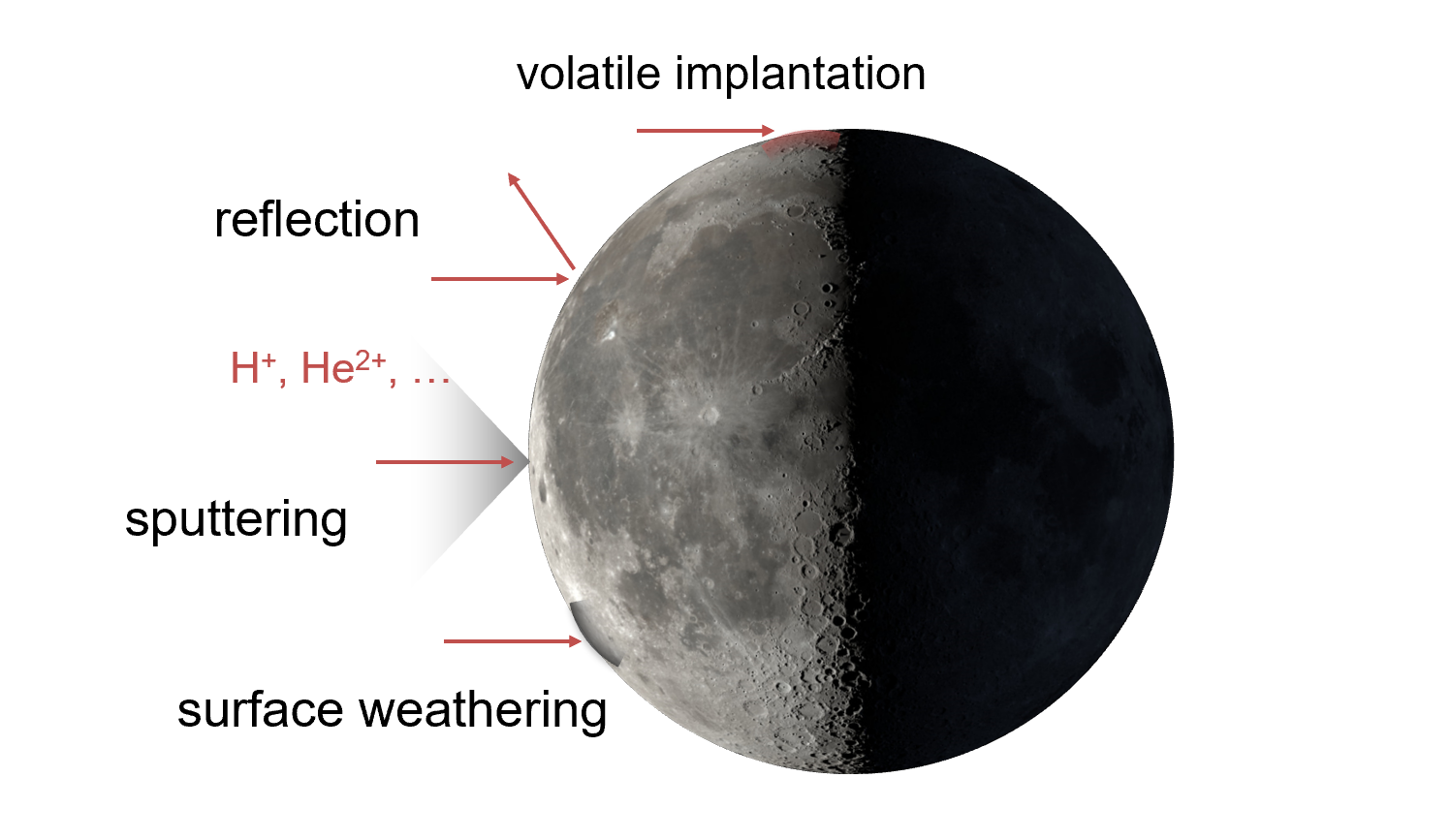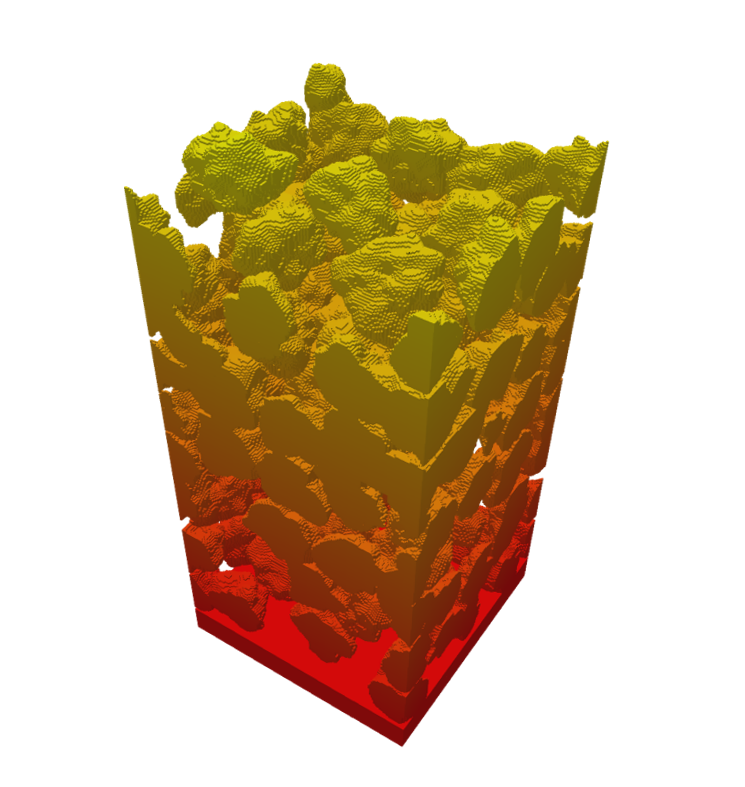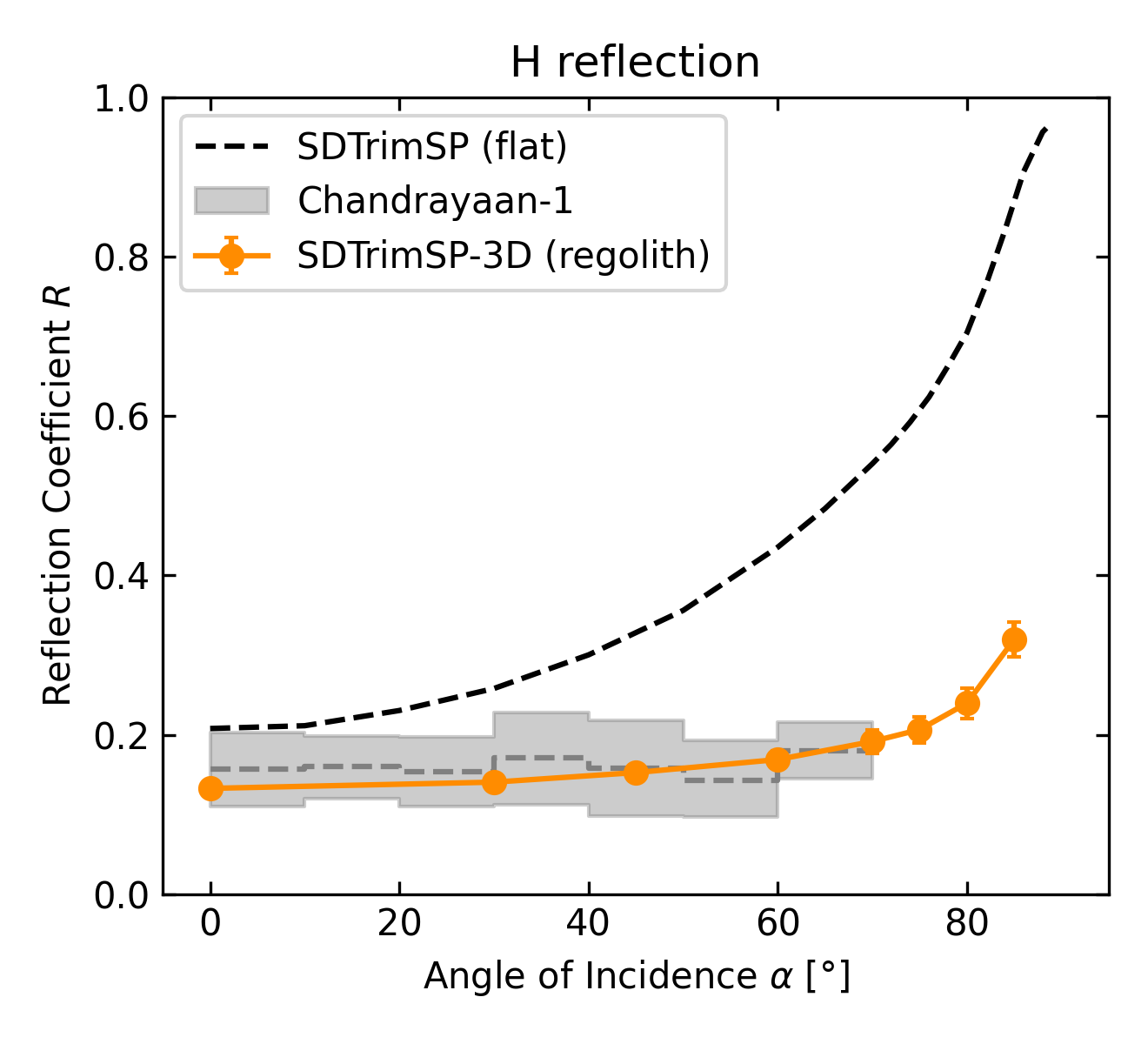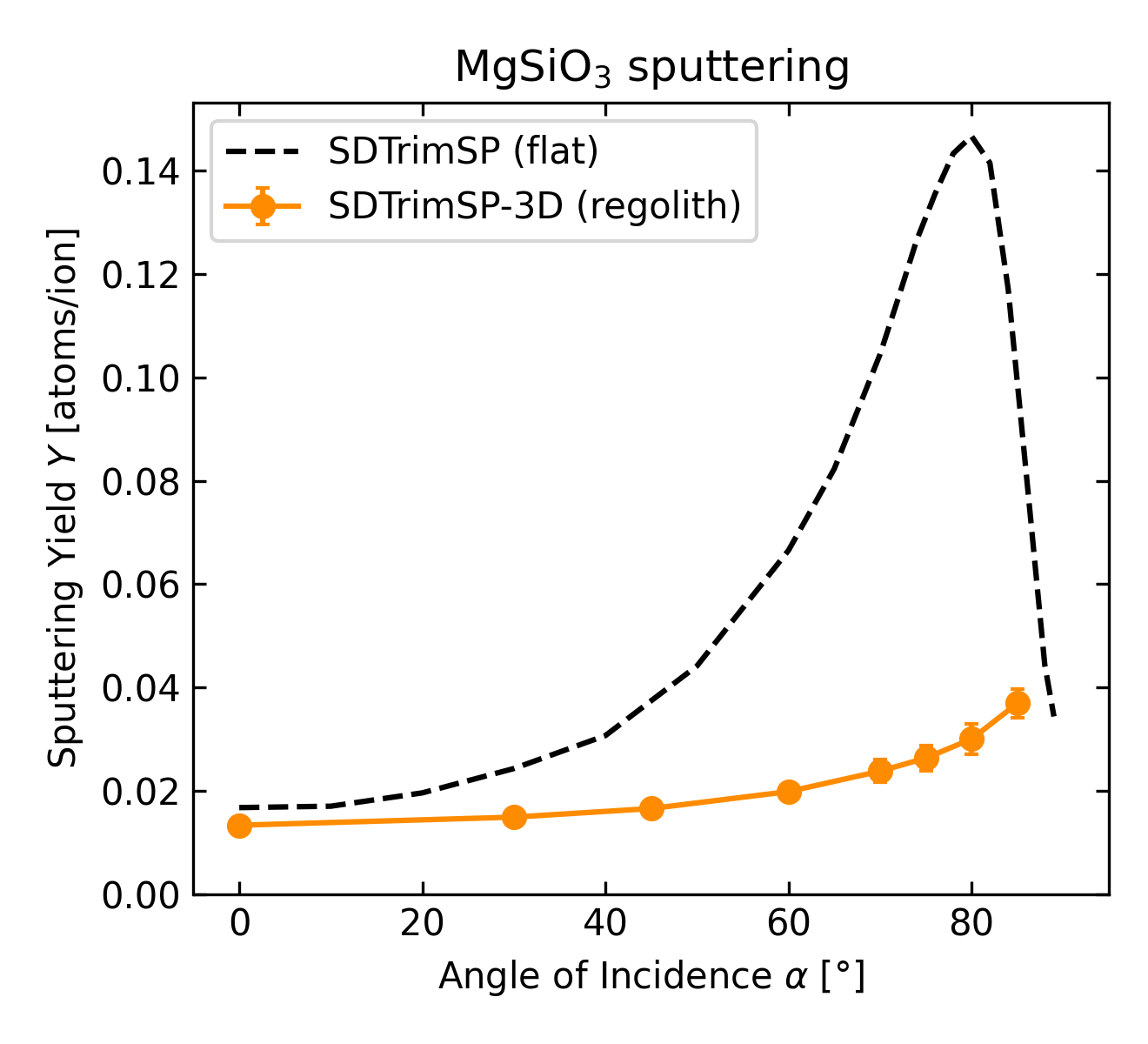Energetic neutral atom emission and sputtering of lunar regolith from 3D simulations
- 1Space Sciences Laboratory, University of California, Berkeley, United States of America (szabo@berkeley.edu)
- 2Institute of Applied Physics, TU Wien, Vienna, Austria
- 3Max Planck Institute of Plasma Physics (IPP), Greifswald, Germany
- 4Physics Institute, University of Bern, Bern, Switzerland


Figure 1, left: Ions interacting with the Moon cause a multitude of phenomena that influence its surface as well as its environment. Right: An example for a regolith setup used for SDTrimSP-3D simulations.
Ions from the solar wind and the Earth’s magnetosphere continuously impact the Moon [1, 2], which affects its surface and its particle environment (see Fig. 1). Due to the complex granular structure of the lunar regolith, an exact understanding of its interaction with precipitating ions is challenging. A better description of the occurring effects is essential for improving models of space weathering and exosphere formation. Important insights have been provided by the analysis of solar wind protons that are scattered as energetic neutral atoms (ENAs) [3-5]. Several observed characteristics are potentially linked to the regolith morphology, but a detailed description of the occurring processes is still lacking.
To answer open questions on the interaction of ions with the lunar regolith, we have implemented a regolith grain model in the ion-solid interaction code SDTrimSP-3D [6]. This simulation program sequentially traces all scattering events between atoms that are set into motion by an impacting ion. Grain shapes with varying fractal dimensions can be realized using a spherical harmonics expansion [7], with an example for a regolith setup being shown in the right image of Fig. 1.


Figure 2, left: Chandrayaan-1 observations of the reflection coefficient (from [8]) are well reproduced by the regolith simulations with SDTrimSP-3D. Right: Sputter yields from regolith are also predicted to have a strongly decreased angular dependence.
Using the above-described inputs, simulations of the reflection coefficient and sputtering yields of solar wind protons impacting an enstatite (MgSiO3) regolith were performed. As shown in Fig. 2, both reflection and sputtering are found to be much less dependent on the angle of incidence compared to a flat surface. Overall, the ENA reflection coefficients from Chandrayaan-1 [8] can be very well reproduced with the regolith simulations. Lower ENA emission energies as well as a preferential backwards scattering as measured by Chandrayaan-1 [9,10] are also observed in SDTrimSP-3D. The major results of these spacecraft measurements can thus be connected to the granular regolith morphology. Therefore, the SDTrimSP-3D regolith simulations represent an important step towards an improved description of space weathering and the particle environment of the Moon.
References
[1] A.R. Poppe, W.M. Farrell, J.S. Halekas, J. Geophys. Res.: Planets, 123 (2018), 37.
[2] Q. Nénon, A.R. Poppe, Planet. Sci. J., 1 (2020), 69.
[3] M. Wieser, et al., Planet. Space Sci. 57 (2009), 2132.
[4] D.J. McComas, et al., Geophys. Res. Lett. 36.12 (2009).
[5] A. Zhang, et al., Planet. Space Sci. 189 (2020), 104970.
[6] U. von Toussaint, A. Mutzke, A. Manhard, Phys. Scripta T170 (2017), 014056.
[7] D. Wei, et al., Comp. Geotech. 104 (2018), 1.
[8] A. Vorburger, et al., J. Geophys. Res.: Space Phys. 118.7 (2013), 3937.
[9] Y. Futaana, et al., J. Geophys. Res.: Planets 117 (2012), E05005.
[10] A. Schaufelberger, et al., Geophys. Res. Lett. 38.22 (2011).
How to cite: Szabo, P. S., Poppe, A. R., Biber, H., Mutzke, A., Pichler, J., Jäggi, N., Galli, A., Wurz, P., and Aumayr, F.: Energetic neutral atom emission and sputtering of lunar regolith from 3D simulations, Europlanet Science Congress 2022, Granada, Spain, 18–23 Sep 2022, EPSC2022-300, https://doi.org/10.5194/epsc2022-300, 2022.

